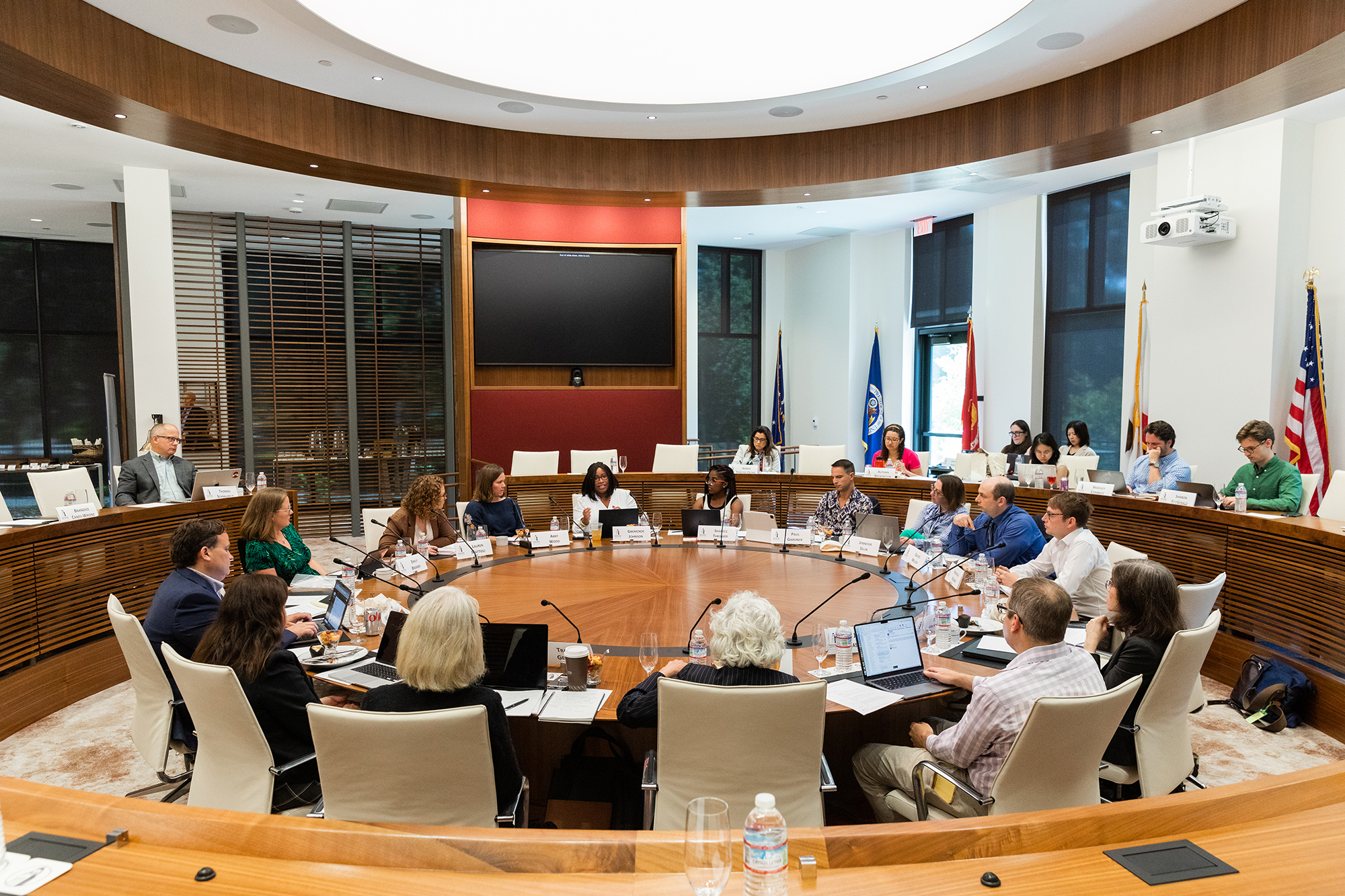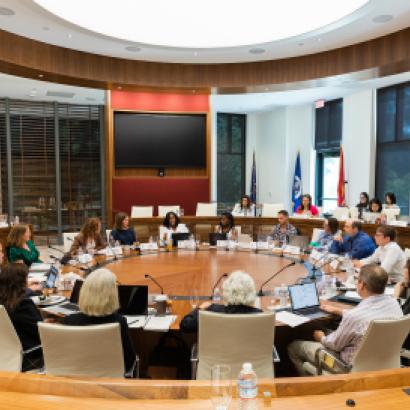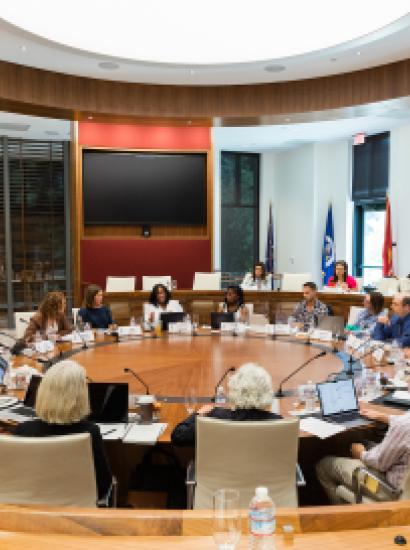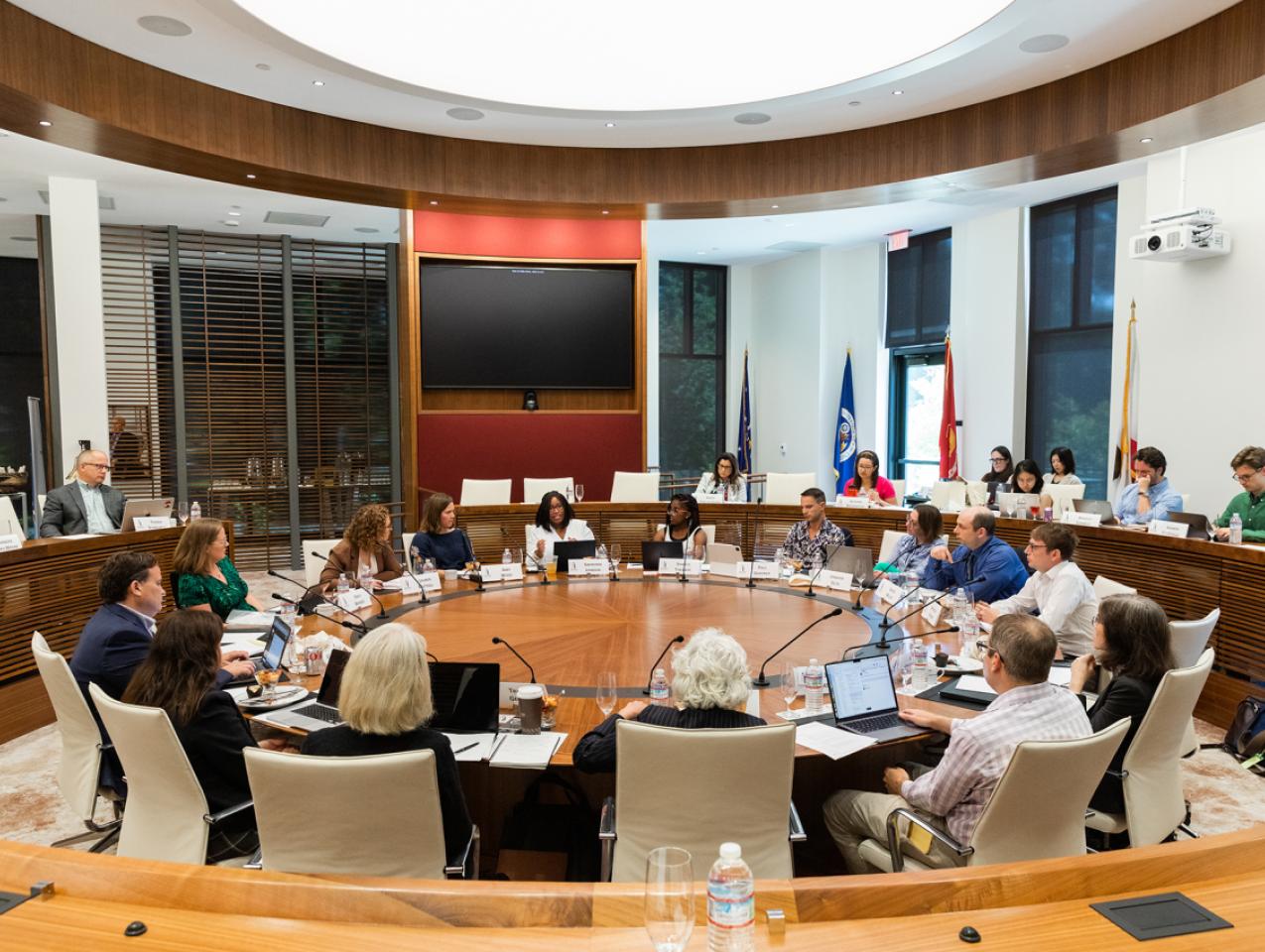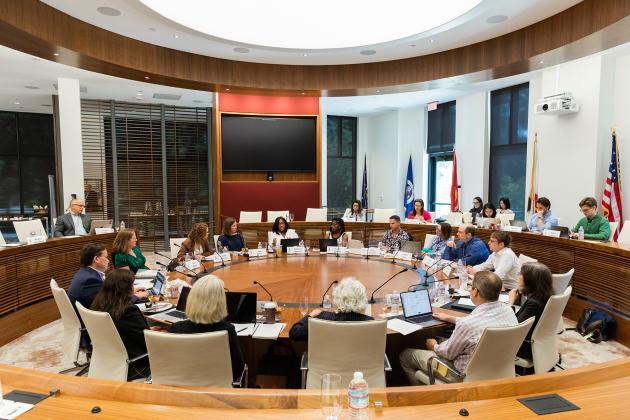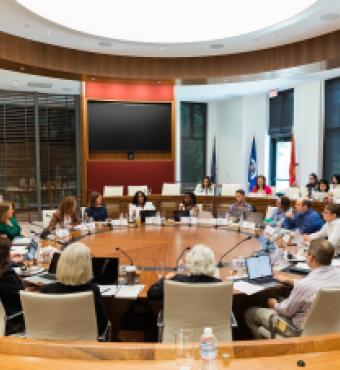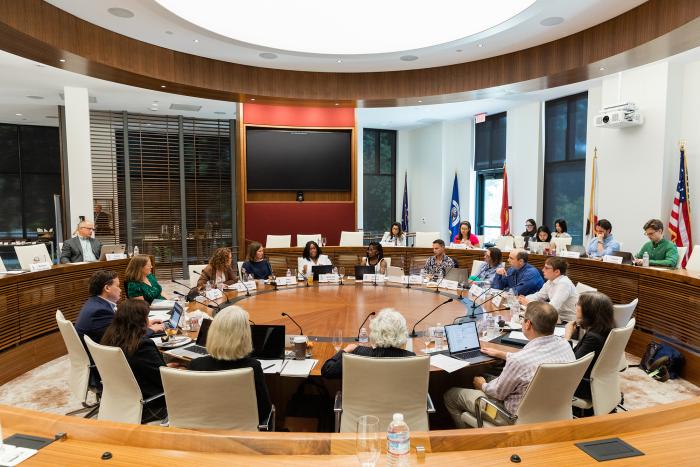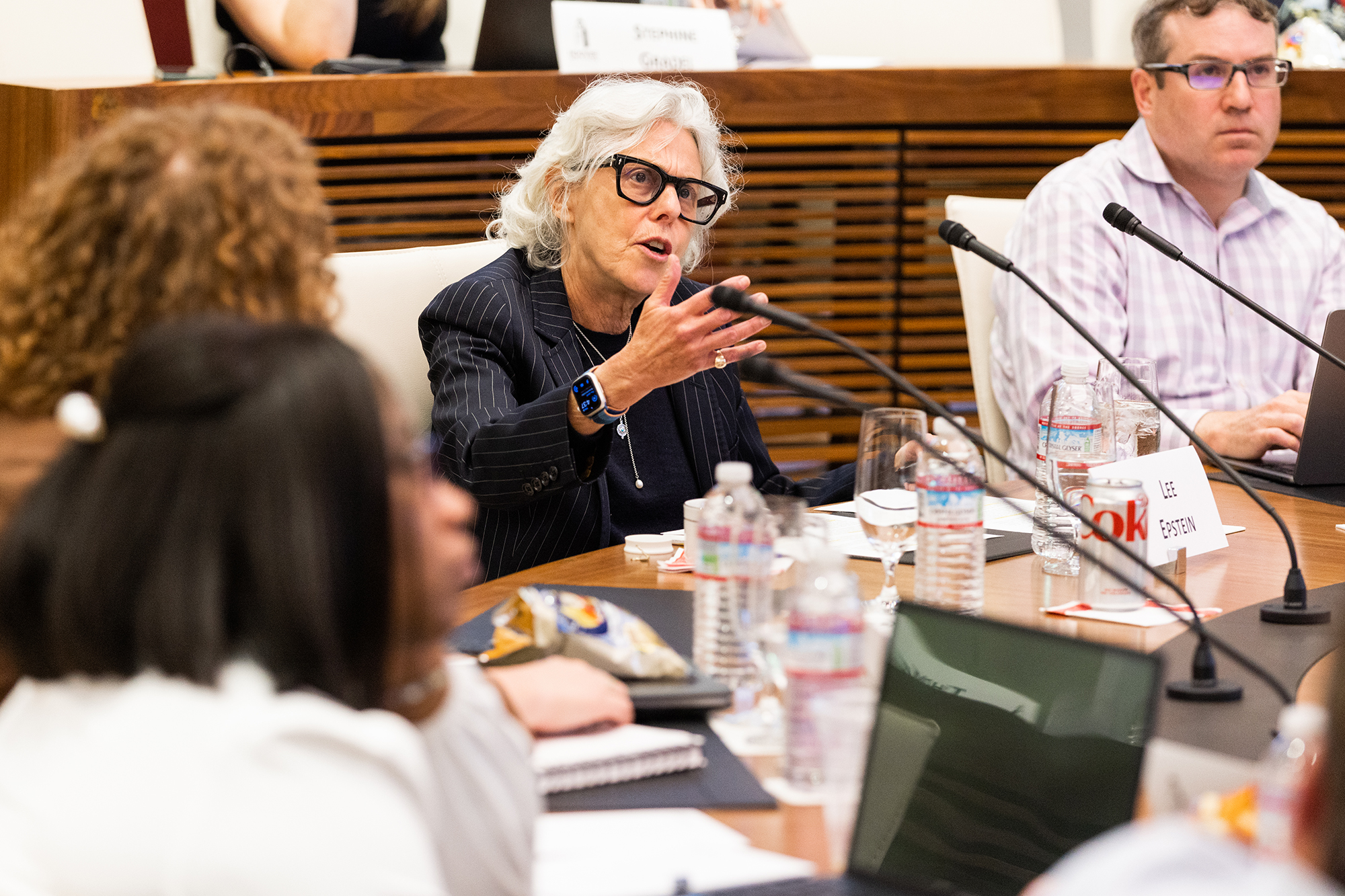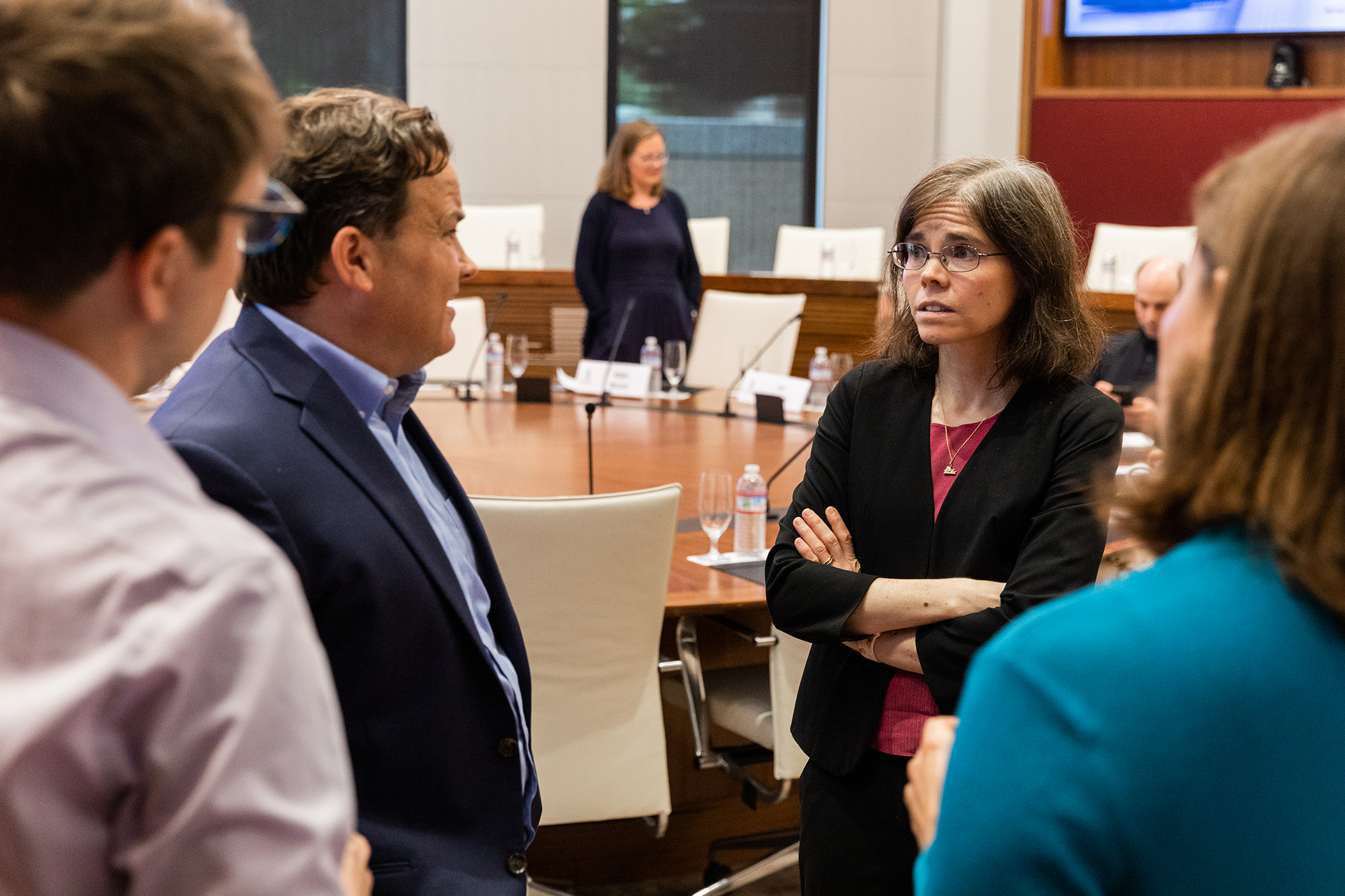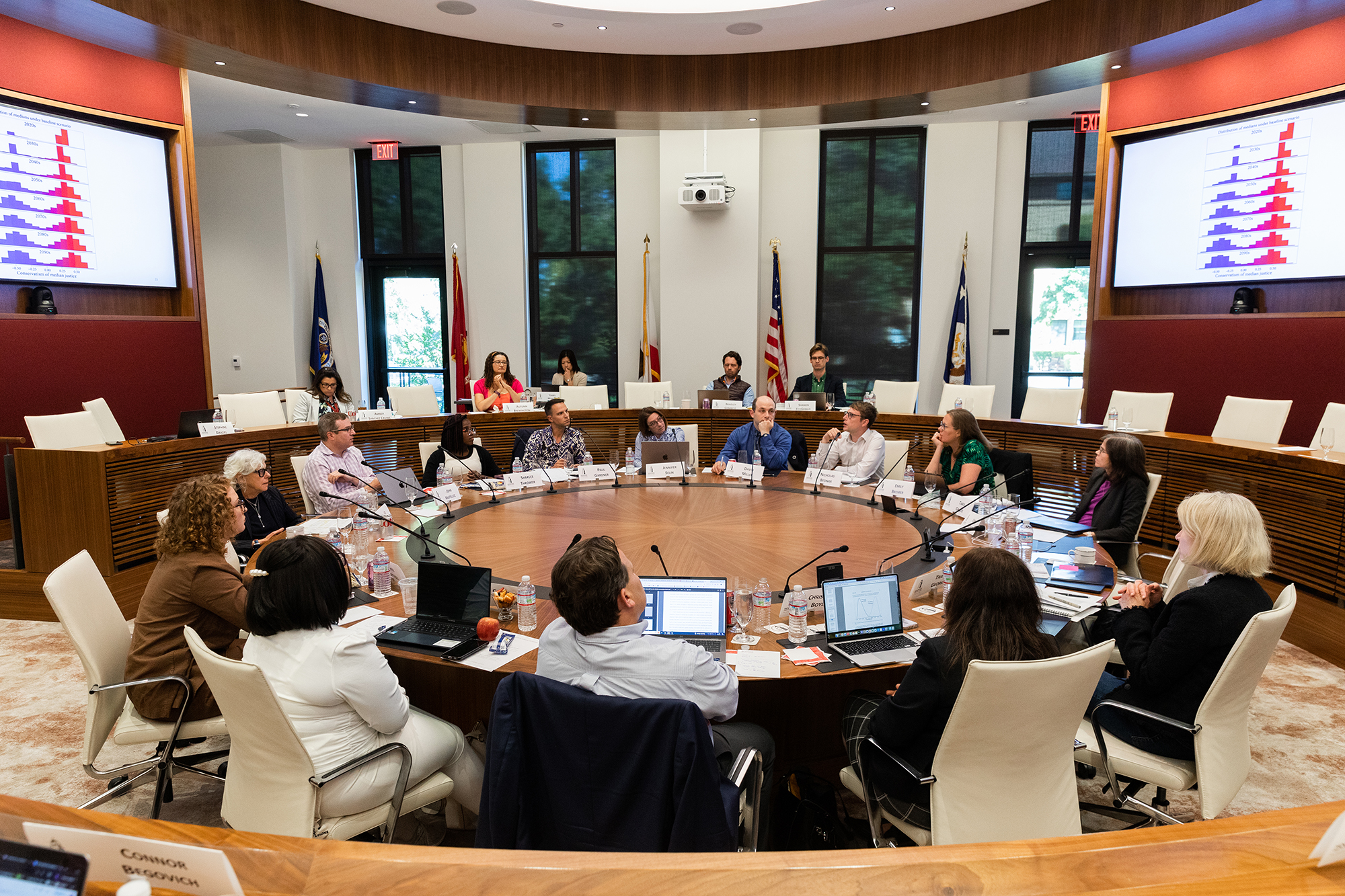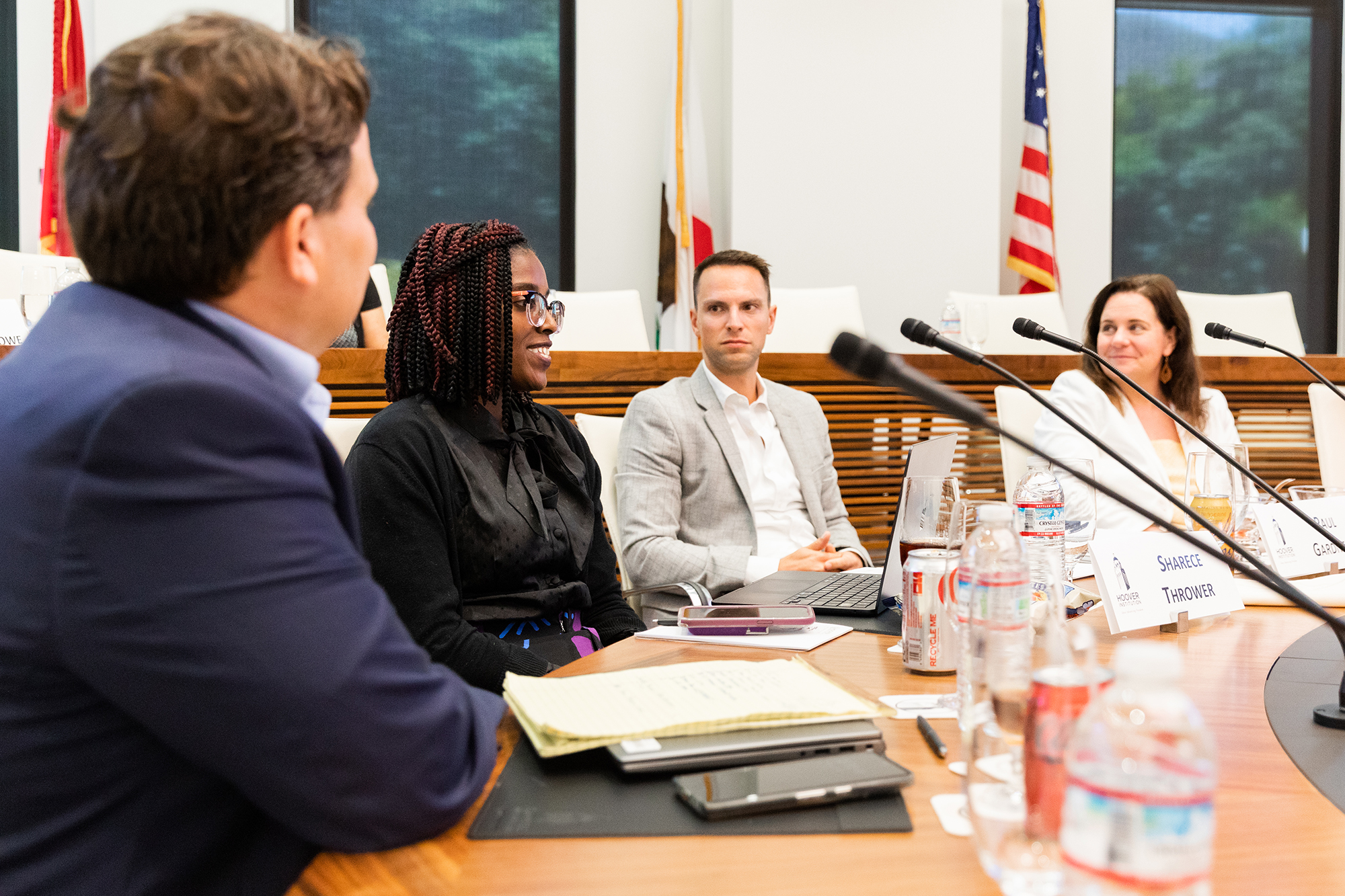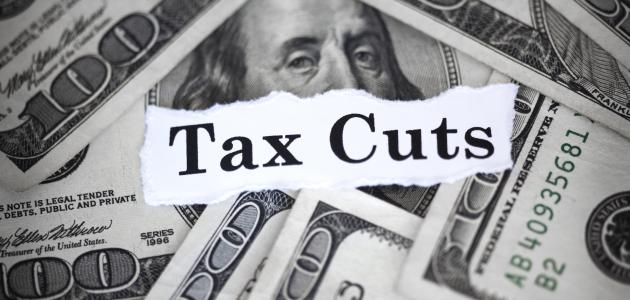Stanford, CA – Scholars of political science, law, and government gathered at the Hoover Institution under the auspices of the Center for Revitalizing American Institutions (RAI) on June 6–7 to discuss the relationship between the executive and judicial branches of the US federal government.
The conference, chaired by Sharece Thrower, Hoover visiting fellow and Vanderbilt University associate professor of political science, brought together leading minds focused on the mechanisms that define the US governing framework of separation of powers.
In her opening remarks, Professor Thrower noted that a number of contemporary controversies center around this type of interbranch activity. From former president Donald Trump’s multiple trials to calls from influential legislators for certain Supreme Court justices to recuse themselves in cases about executive activity, political debates currently rage about the proper conduct of—and interaction between—these branches.
Given these pressing questions in the public discourse, and RAI’s mission to seek ways to increase justified public confidence in government, the conference also considered possible reforms that could improve trust and efficacy across the two branches.
Presentations focused on a range of issues in executive-judicial relations and politics. A key theme throughout the discussion was how factors such as ideology, ambition, political salience, and the merits of individual cases can sway judicial decisions and executive or prosecutorial actions.
Gbemende Johnson, associate professor of political science at the University of Georgia, presented on disputes between the executive and judicial branches over the release of controlled information. Her paper asked: How do salience and ideology influence judicial decision making in transparency disputes between the executive and judicial branches?
In response, discussant Abby Wood, professor of law, political science, and public policy at the University of Southern California, commended the paper and emphasized the civic importance of studying Freedom of Information Act litigation. Wood also explored in more detail the relationship between the political salience of requested materials and the degree of judicial deference that will be shown to the agency that made the initial decision not to disclose those records.
Later, Lauren Mattioli, assistant professor of political science at Boston University, presented her work on the relationship between US attorney autonomy and plea/conviction rates. Her paper sought to identify whether US attorneys and district court judges are, for the appointing presidential administration, complementary, substitute, or independent goods.
If complementary, more successful prosecutorial appointments would lead the administration to push for more preference-aligned judicial appointments as well, and vice versa. If substitutes, an administration may seek to further its policy aims through appointments of either viewpoint-aligned prosecutors or judges. And if independent, efforts to accomplish judicial and prosecutorial appointments may be unrelated to one another in terms of complementarity or substitutability.
This blending of analytical frameworks and methods from the disciplines of economics and quantitative political science typified the approaches of other papers given at the conference.
The fundamental significance of this field derives from its ability to help make sense of executive and judicial actions in situations where data is limited and where cases can be difficult to interpret individually. Understanding patterns in judicial behavior and executive appointment preferences can shed light on deeper structural forces influencing particular judicial and prosecutorial outcomes.
While discussing research with their peers, many scholars present expressed gratitude to their colleagues for offering helpful comments and insights on presented papers. The conference showcases the Hoover Institution’s ability to help improve the quality of academic scholarship across multiple fields by convening leading scholars for in-depth, critical discussions of one another’s work.
The conference also demonstrates the commitment of the Center for Revitalizing American Institutions to supporting first-rate scholarship on the actual operation of American government, which can be put to practical use by policymakers. Through the deep study of quality data, the center is able to gauge how government truly functions and ultimately make recommendations to enhance its operation.
Reviewing data on public trust in courts at various levels, David Miller, assistant professor of political science at the University of California, Riverside, highlighted the important role of prosecutors in establishing and maintaining public trust in the justice system. He also explored how partisanship and prosecutorial misconduct can result in lasting negative public perceptions of the legitimacy of judicial outcomes.
Another important area of judicial-executive interaction discussed at the conference was administrative law and attempts to appeal decisions made via executive agency actions. Judicial review of executive agency action requires first exhausting appeal options within the executive agency itself, prior to litigation in federal court. Delays in this process raise questions of accountability, trust, and democratic legitimacy.
The prospect of pending Supreme Court decisions, including an opinion expected this year concerning a rule issued by the National Marine Fisheries Service, potentially altering the constitutional law around Chevron deference, cast some uncertainty over discussions of the future of executive agency rule making and administrative law proceedings.
As the American public continues to debate the proper boundaries of administrative law, scholarship at the intersection of executive and judicial politics provides important context for the realities of executive branch rule making and enforcement activity over time.
Focusing on the judiciary, Jonathan Kastellec, Princeton professor of politics and coauthor of Making the Supreme Court, presented on possible reforms to the Supreme Court, including nine- or eighteen-year term limits for the justices, and how those could reshape the court’s ideological composition over the coming decades. Responding to these remarks, Lee Epstein, professor at the University of Southern California Gould School of Law, analyzed the current Supreme Court bench in light of the ideological drift of the justices over time.
Many discussants noted that any changes to the federal judiciary that remove lifetime appointments are very likely to impact incentives facing justices or judges, which could lead to unintended consequences in their behavior on the bench.
One of the three main pillars of the Center for Revitalizing American Institutions is a commitment to studying US governmental institutions as they operate in reality. To read more about work from the center within this area, please visit this page. To learn more about the other focus areas within RAI, you can visit this page.







